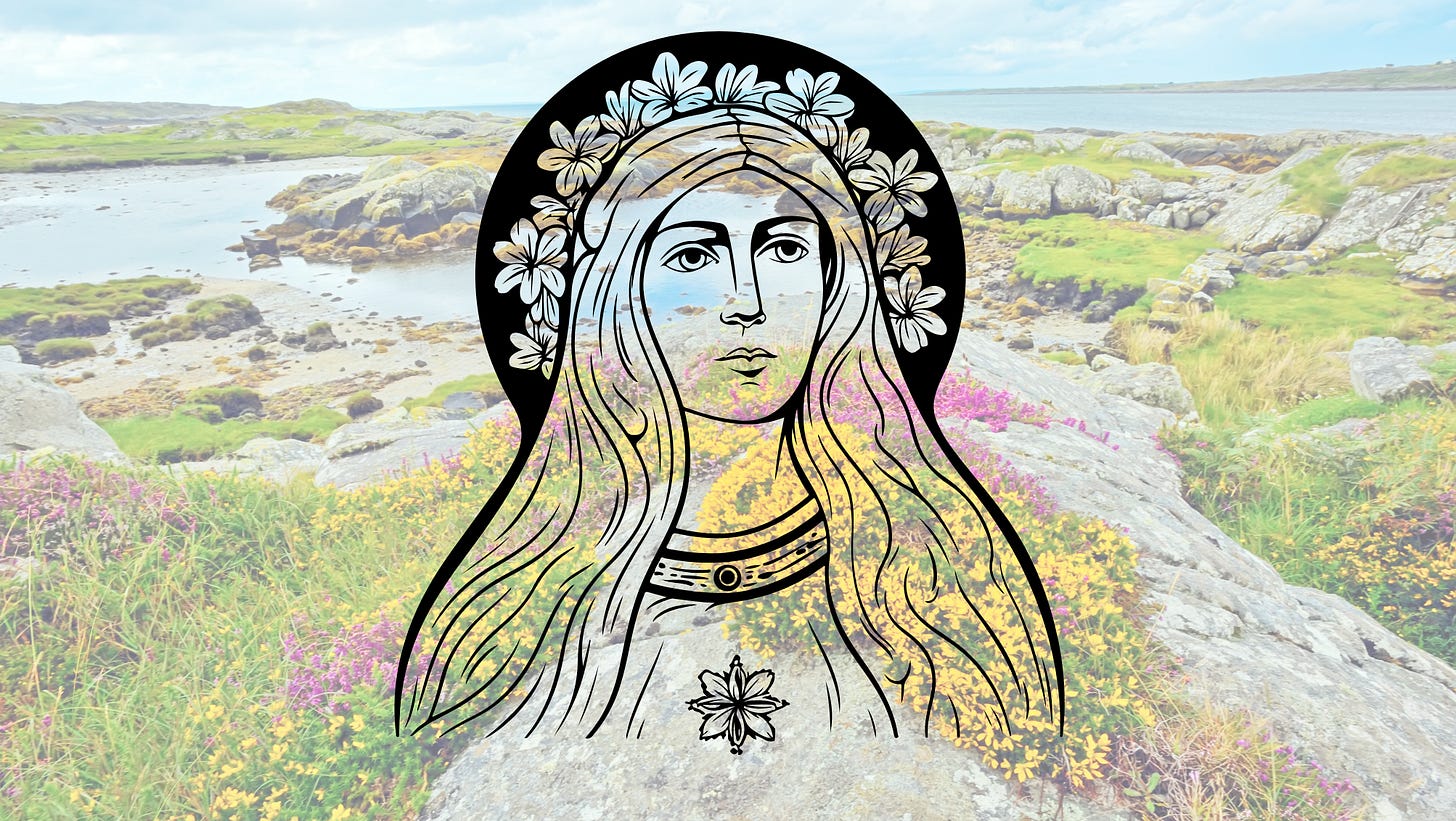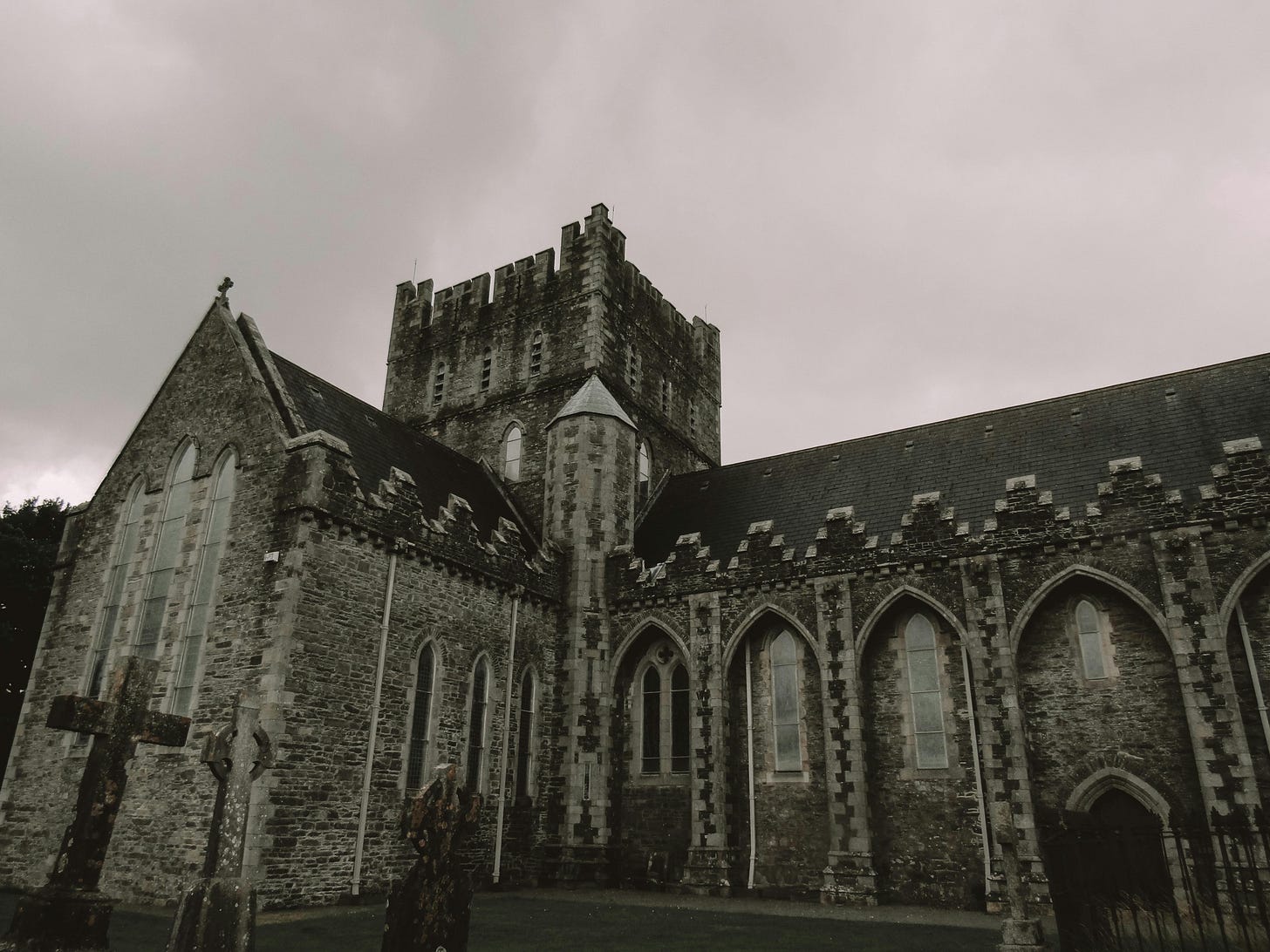Brigid is one of the most enduring goddesses in Celtic mythology—so powerful that she survived the Christianization of Ireland and became a saint, even travelling across the ocean and joining the Vodou pantheon as Maman Brigitte, a rum-drinking goddess who rules cemeteries. But who is Brigid? A goddess of fire, poetry, and healing? A patron of blacksmiths and bees? A solar deity or a divine intercessor? Brigid is all of these and more.
Two writers I admire—Courtney Weber and Rhyd Wildermuth—have both written at length about their transformative experiences with Brigid. Weber was forcefully held to her neglected promise to write a book on the goddess, while to Wildermuth, she appeared as a laughing woman in a dream who gave him a new name and guided him to settle on a different continent.
My own experiences with Brigid have been more indirect and subtle—I’ve met her in guided meditations, and a priestess channeled a message for me from her. I’m a bit of a sceptic, so I can’t say for sure whether I received messages from a goddess or from my own unconscious mind, but despite her fearsome reputation as a goddess of fire and war, Brigid has been relatively gentle with me. Perhaps it’s because she came into my life after my mum died—and she’s also the goddess of orphaned children.
so—who is Brigid?
Though my own encounters with Brigid have been gentle, her many aspects reveal a complex and multifaceted figure, influencing many areas of life. While many deities have multiple associations, Brigid has even more than most—here are just a few of the areas she dabbles in:
Fire, war, and transformation
Water, healing, and childbirth
Poetry, blacksmithing, bread, and beer
Bees and livestock
The home and hearth
Protection and death
Brigid’s enduring and widespread popularity are likely thanks to her versatility. According to Weber in her book, “Brigid”, the goddess probably emerged from a collection of Stone Age goddesses that were absorbed into the Celtic pantheon as the Celts spread throughout Europe.
Variations on the name “Brig” were commonly used in this animist culture to refer to spirits that dwelled in holy places, since the word meant “exalted one” or “great lady”. Eventually, these diverse versions of Brig merged into a single popular and multifaceted goddess.
Though Brigid’s origins are tied to the British Isles, her worship flourished most strongly in Ireland, especially after Roman rule diminished Celtic traditions in Britain, then known as Brigantia, or “Land of Brig”. Some believe that Druids fleeing west to escape the Romans brought Brigantia to Ireland, while others maintain she’s native to the province of Leinster.
In Irish mythology, Brigid was said to be the daughter of Dagda, chief of the Tuatha Dé Danann—a supernatural race in Irish lore. However, myths about her origins vary widely—some versions name her as Dagda’s wife, while others claim she was born of a river.
Though considered a triple goddess, Brigid is not your typical ‘maiden, mother, crone’. According to Weber, Brigid “has historically been considered a solar deity and as three identical women of the same age, sometimes called the Three Brigid Sisters: Woman of Healing (Ban leighis), Woman of Smithwork (Ban goibnechtae), and Woman Poet (Ban fhile)”.
Brigid and Imbolc
As the Lady of the Springtime, the time of year most strongly associated with Brigid is Imbolc, which falls around February 1st. This is when the first signs of spring start to stir: The days grow longer, flowers and trees begin to bud, animals emerge from their hibernation, and livestock fall pregnant.
With a sweep of her green cloak across the land, she is said to melt the ice and bring new life. At Imbolc, people celebrate and honour Brigid by lighting fires and candles (especially orange, yellow, and red), baking bread and cakes, and making Brigid’s crosses.
from Brigid the goddess to Brigid the saint
Just as Brigid bridges multiple realms—fire and water, poetry and war—she also straddles two spiritual traditions: pagan and Christian. With the spread of Christianity, many pagan deities were lost and forgotten, but Brigid was too powerful and ancient a goddess to disappear. Instead, she transformed into a member of a new pantheon—that of the saints.
Saint Brigid—both an historical and a mythical figure—built her cathedral in Kildare, on the site of a much older temple dedicated to Brigid the goddess, where 19 priestesses attended an eternal flame in her honour. In 1993, the Brigidine Sisters at Kildare re-lit Brigid’s Fire in Market Square, and have kept it burning ever since.
Saint Brigid is believed by some to be the foster-mother of Christ—hence her association with children and orphans—and she maintains many of the goddess’s mysterious traits and associations. These include the association with fire as well as oak—a sacred plant in the pagan tradition. The name Kildare comes from the Gaelic “Cill Dara”, meaning “Church of the Oak”.
To this day, Saint Brigid remains as beloved a figure among Irish Catholics as Saint Patrick himself. In fact, in 2023, following a campaign by the group Herstory, Saint Brigid’s Day became a public holiday in Ireland, celebrated on the first Monday of February—highlighting her continued importance and relevance to people today.
working with Brigid
If you feel drawn to Brigid, I highly recommend the book “Brigid” by Courtney Weber, which goes into great detail about the complex origins and many mysteries of Brigid. It will help you gain a better understanding of who Brigid is and what kind of relationship you might want to have with her. It also contains plenty of rituals and spells for working with Brigid and asking for her help and guidance.
Some suggestions for connecting with Brigid this Imbolc include:
Lighting an orange, yellow, or red candle and inviting her into your life.
Writing poetry to honour Brigid or the Springtime.
Making an offering of bread or cakes.

Whether a goddess, a saint, or simply an archetype that exists inside us all, Brigid has a lot to offer and continues to inspire, guide, and sometimes forcefully push her thousands of followers and devotees all over the world.
Happy Imbolc!






